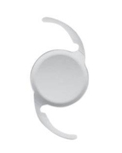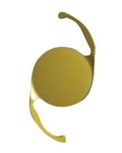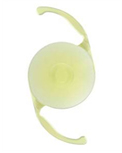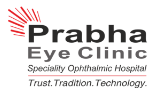Cataract surgery is the most frequently performed surgical procedure in the world. In conventional phacoemulsification cataract surgery, the surgeon uses hand held instruments to manually create a circular opening in the outer shell of the cataract. Next the surgeon uses ultrasound energy and instruments to break up and remove the cataract. Finally, the surgeon implants an artificial intraocular lens inside the remaining shell to replace the natural lens.
The aim of the surgery is to provide patients with the best possible post-operative vision. Cataract surgery outcomes are based on planning, managing and performing the surgery and the effective monitoring of the post-operative period.
At Prabha, you will benefit from the worlds’ best array of instruments and services backed with the experience of having performed over lakhs of surgeries.
Our team of doctors is experienced operating on patients needing complex and combined cataract surgery with histories of Glaucoma , Retinal problems , Paediatric cataracts and in uveitis eyes .
Surgical planning: At Prabha Eye Clinic benefit from the most accurate pre-surgical planning suite to ensure the best possible IOL and surgery method choice for your eye
We use
In the planning of cataract surgery the following technologies are utilized:
- IOL Master 700
- iTrace
- Optical Coherence Tomography
- Anterion
- Specular Microscopy
- Verion biometry
- Pentacam
IOL Master 700 : It supports your biometry data review and analysis, Intraocular lens calculation and selection, Intraocular lens ordering, surgical planning and post-operative data collection
iTrace is a ray-tracing technology used to understand patient’s vision.
Optical Coherence Tomography (OCT) is a non-invasive imaging test that uses light waves to take cross-sectional pictures of your retina. With OCT, each of the retina’s distinctive layers can be seen with details discernible to micrometres.
Anterion is a single workflow-efficient solution that brings together corneal topography and tomography, biometry measurements and IOL calculation to transform the day-to-day routines in cataract and refractive surgery as well as cornea and glaucoma diagnostics
Specular Microscopy is a non-contact examination, auto alignment and measurement, plus automatic analysis of the endothelium layer.
The VERION™ Image Guided System to add greater accuracy and efficiency during surgical planning and execution. Consisting of the VERION™ Reference Unit and the VERION™ Digital Marker, it will enhance the way we perform cataract surgery.
Pentacam- provides qualitative data used to assess the cornea. This includes topography and elevation maps of the anterior and posterior corneal surface, in addition to central and peripheral pachymetry.
Wide array of lens choices to suit every type of eye and lifestyle. Our doctors and counselors will guide you in making the most accurate choice of lens.
We are empanelled with many insurance and other health schemes. Our insurance helpdesk with assist you with the necessary documentation.
Surgeons
- Dr. Praveen R Murthy
- Dr. Gowri J Murthy
- Dr. Kalpana B Murthy
- Dr. MR Praveen
- Dr. Roopashree Matada
- Dr. Geethanjali C J
- Dr. Pooja Jain
- Dr. Kavya N
- Dr. Ajinkya Vivekrao Deshmukh
- Dr. Priyanka Sudhakar
Precision during the surgery
Benefit from India’s first intraoperative real time OCT system with the most advanced ophthalmic microscope in the world. The Carl Zeiss Lumera 700 with Rescan combined with the Callisto Eye puts unprecedented accuracy and control in the hands of our surgeons. With the best 3D microscope, Artevo 800, which is a completely integrated digital microscope for heads-up surgery.
The Cataract Surgery systems with an array of best in class surgical equipment.
- LenSx FEMTO Cataract Suite
- Artevo 800
- Carl Zeiss Lumera 700 with Rescan
- Carl Zeiss -Visu 100 Operating microscopes
- Leica M 822 Operating microscope
- Centurion Cataract Systems
- Callisto eye
- Zepto Cataract with Robotic technology
In recent years, laser technology has been incorporated into cataract surgery to enhance the precision and accuracy of the procedure. Laser cataract surgery has shown excellent results for accurate self-sealing corneal incisions, arcuate incisions to reduce astigmatism, highly circular, strong and well-positioned capsulorhexis, and safer and less technically difficult removal of the cataract with almost complete elimination of energy in the eye to break up the cataract.
What are the risks?
Cataract surgery is one of the safest and successful surgeries available. There are risks associated with all surgical procedures. Fortunately problems related to cataract surgery are rare and our team of highly skilled and experienced surgeons and makes every effort to minimize risks and make sure the procedure is as safe as possible. All the risks, benefits and alternatives of cataract surgery will be discussed with you during your cataract consultation and we encourage you to contact us at any time if you require additional information.
Post-operative care
Your cataract surgery recovery should be short and uneventful. Statistics also show that your chances of a good outcome and sharper vision after surgery are excellent.
Cataract surgery often takes no longer than about 10 minutes to perform. But immediately after the surgery, you will need to rest in a recovery area. Typically, this takes about 30 minutes to an hour.
You may need sunglasses to wear on the trip home to protect your eye from bright light and glare.
If you are sleepy or tired when you get home, you might want to rest in bed for a few hours.
What Is the Typical Cataract Surgery Recovery Time?
Many patients report clear vision within few hours after cataract surgery. But each person heals differently, and you may need as long as a week or so before you can resume most of your activities..
Typically you will have a follow-up appointment with our cataract surgeon the day after the procedure.
Sometimes people report some dry eye or “scratchiness” after cataract surgery. But these sensations should subside as your eye heals,
Your cataract surgery recovery should be complete in about a month, when your eye is completely healed and you will be provided with the final glass correction.
Cataract Surgery Procedure
Femtosecond Laser Cataract Surgery
Femtosecond laser-assisted cataract surgery (FLACS) – is a bladeless surgical option for cataract. Below are the steps followed during the FLACS procedure:
- A laser machine used to make the corneal incisions, create an opening in the lens capsule and liquify the nucleus.
- The patient is then shifted to the operating room and the cataract surgery is completed.
The use of laser makes a more precise incision as compared to manual incisions. Most importantly, the cataract is already fragmented by the laser, thereby using lesser energy during the actual phacoemulsification surgery.
This premium procedure is the most advanced type of cataract surgery and benefits the patients in terms of
- lesser collateral damage to surrounding tissues
- faster healing
- improved visual outcomes.
The computer-guided, surgeon-controlled laser has a number of advantages over the traditional cataract surgery, including:
- Surgical precision
- Bladeless procedure for corneal incisions and opening the lens capsule
- Customised laser procedure
- Negates the challenges and risks associated with traditional cataract surgery
- Decreases some risks associated with traditional cataract surgery
In addition, because the laser breaks the lens and divides it into small pieces, the cataract removal procedure is easier. Less energy, light, and fluid are run through the eye during the cataract removal making the procedure less traumatic for most patients. As a result, there is less swelling postoperatively in the cornea and retina than with basic cataract surgery.
MICS (Micro Incision Cataract Surgery)
MICS (Micro Incision Cataract Surgery) – In MICS cataract surgery, the incision size will be ranging between 2.2-2.4 mm. The smaller size of incision compared to the standard phacoemulsification procedure has the benefit of faster healing and thereby lesser astigmatism.
Phacoemulsification
Phacoemulsification is a cataract surgery in which a phacoemulsification probe is used to fragment and remove the cataract that utilizes ultrasound energy. As the entire cataract is emulsified, a smaller incision of 2.4-2.8 mm is sufficient which results in lesser astigmatism and thus better quality of vision for the patient. A foldable intraocular lens is implanted after and no sutures are required. This surgery is performed under topical anaesthesia and the procedure is painless. It offers quick healing and good surgery outcome.
Cataract symptom Simulator

1. Blurry Vision

2. Double Vision

3.Sensitivity to light and glare

4. Difficulty seeing in poor lighting conditions

5. Seeing halos around lights

6. Fading of colours
Cataract Surgery Lens Options

Monofocal Lens
This is a Monofocal Lens which is used in a traditional cataract surgery. It provides good distance vision, but you will still need glasses for close and possibly for intermediate vision.

Toric lens (corrects astigmatism – cylindrical power)
If you have astigmatism and wish to correct it, you can eliminate both cataract and astigmatism with the same lens. You may still need glasses for improved vision.

Multifocal Lens
A multifocal lens can improve near, far, and intermediate vision, allowing most patients to function with little need for glasses.

Extended depth of focus IOLs
EDOFs (Extended depth of focus IOLs ) are the Alcon Vivity IOL, Tecnis Eyhance IOL, Clareon IOL. These IOLs primarily are designed to correct the distance and intermediate vision.
We understand that your decision to undergo cataract surgery requires careful planning. If you have any questions about your cataract consultation or cataract surgery, please feel free to reach out to us at 080-22444131/141 between 9 AM – 6 PM.
Pre-operative Instructions for Cataract Surgery
1.THE DAY OF CATARACT SURGERY:
Please follow all the instructions given to you by your doctor. You will be instructed to use eye drops to the eye scheduled for surgery pre-operatively to prevent infection. A good night’s rest is important before the day of the surgery.
2.REGULAR MEDICATIONS:
If you are on medication for systemic illness, please continue your regular medication, unless specifically instructed otherwise by your physician/ophthalmologist.
3. OTHER INSTRUCTIONS:
- Please shave on the day of surgery.
- You can bring 1 attendant over the age of 18 years with you on the day of the surgery.
- You can have breakfast (normal diet) before coming for the surgery.
- Please wash your hair on the day of surgery as you will not be able to do so for 1 week after the surgery.
- Please Wear loose, comfortable clothing, when you come for the surgery.
Post-operative instructions:
- Before applying any drops/ointment to the eye, hands should be thoroughly washed.
- Eye drops/ointment should be put in the lower part of the eyelid only.
- Always wear dark glasses to protect your eye.
- In case of cold, cough or constipation, please get treated immediately.
- Do not rub the operated eye.
- Do not sleep on the operated side.
- Avoid dust and smoke.
- Do not exercise or lift heavy weights as this may strain the eye.
- Avoid playing with small children.
- Do not take headbath or wash the operated eye.
IMMEDIATELY AFTER SURGERY
- As soon as your surgery is complete, you will be in the recovery area for observation
- After observation, you will be shifted to the day care lounge or the ward by the Nurse in-charge.
- In the day care lounge/ ward, you will need to rest until the effects of sedation or anaesthesia wear off. This usually takes an hour. After this, you will be explained all the medications you will need to use and the instructions for post-operative care of your operated eye will be explained to you. After these instructions are give, you can go home.
AFTER CATARACT SURGERY
Usually, there is no severe pain associated with your cataract surgery. There may be symptoms such as minor discomfort, blurry vision, watering and an itchy feeling, or a little soreness in your eye for a couple of days . Most patients do not feel any discomfort, however a few may feel like a grain of sand in the eye. There may be slight redness after surgery, which is normal and all these symptoms will resolve in a few days. You can take the pain killer prescribed for you at the time of discharge.
FOLLOW UP WITH THE DOCTOR AFTER SURGERY
You will need to see the doctor after 24 hours of your surgery, 1 week and 1 month after your surgery.
OTHER INSTRUCTIONS
- You will need to keep your post operative glasses on for 24 hours and protective eye wear for a month after surgery. You can remove the glasses while lying down or sleeping.
- You may carry your lunch or a snack to have after your cataract operation.
- Your vision may be slightly blurry and it will settle down in a few days after surgery.
- Since one of your eye is operated, you may experience slight vision imbalance, which will settle down as soon as your other eye is operated. You can opt to get the other eye operated in a span of 1 day.
- In case you experience symptoms of worsening or loss of vision, spots (floaters) or flashes in vision, increasing redness, increasing pain despite the use of pain medications, pus discharge, and persistent irritation post cataract surgery, you need to see your doctor immediately. Please contact us : 080-26659090/26659595, 080-22444131/22444141
What to expect when you are at Prabha for a Cataract Surgery
Consultation
- Patient schedules an appointment for opinion for cataract surgery
- Patient completes consultation with the doctor of choice
Counselling
- Patient is advised to undergo counselling
- Patient is sent to counselling desk
Pre-operative tests
- Once counselling is complete, pre-operative tests are advised
- Patient undergoes the pre-operative evaluation along with Cataract Profile – Blood tests including serology, ECG, Physician Fitness and various diagnostic tests to determine the measurement of your lens






